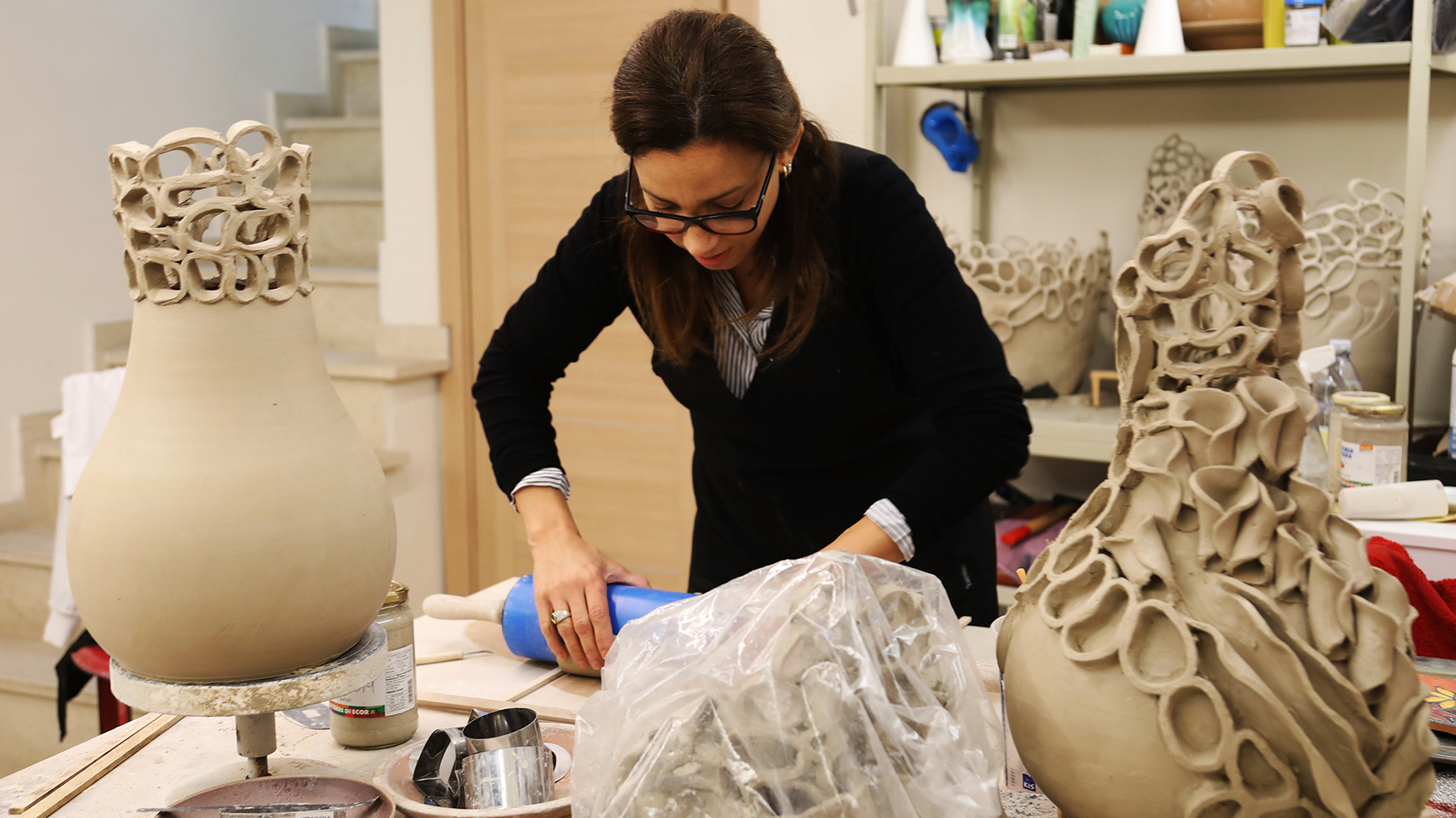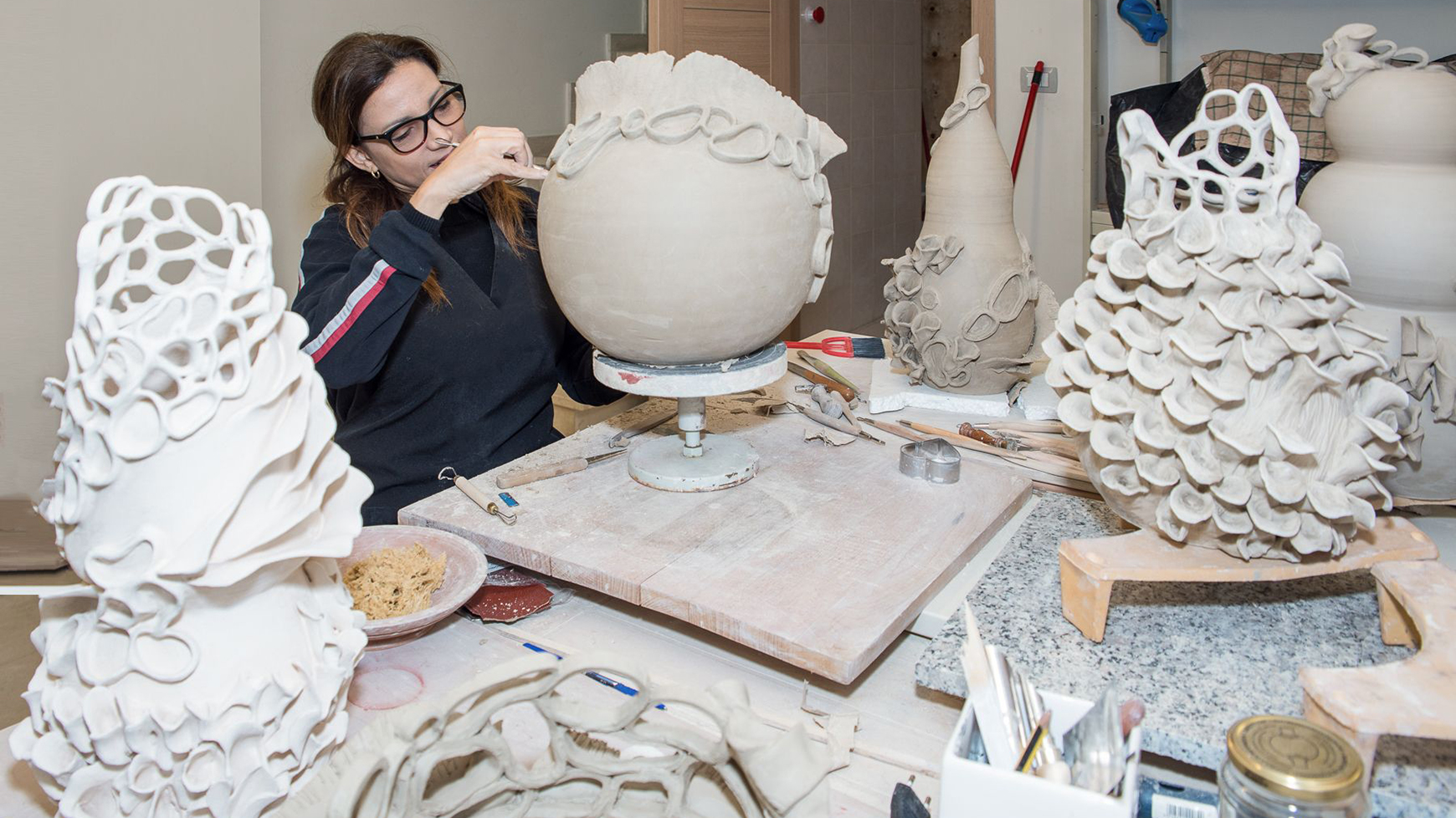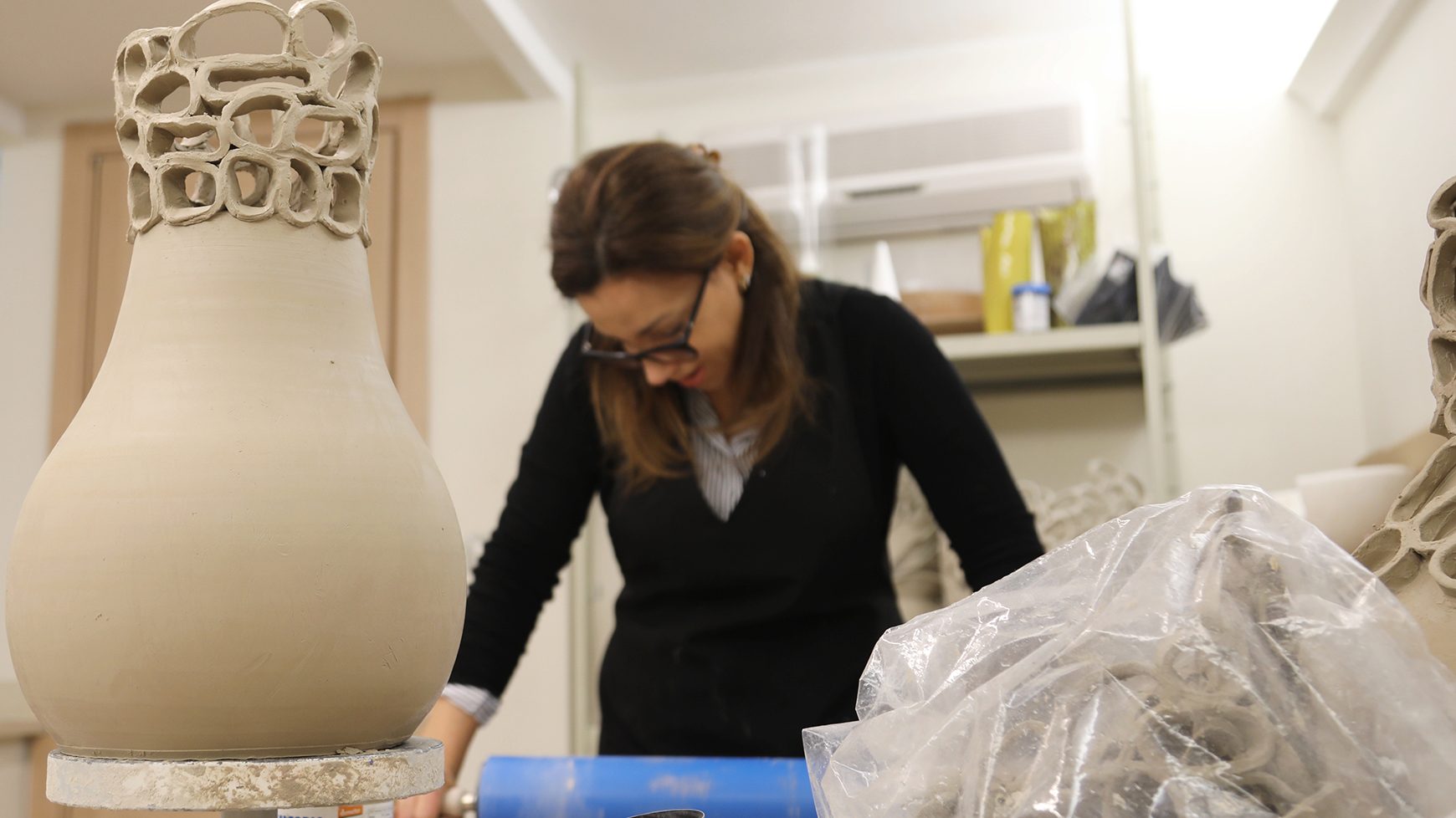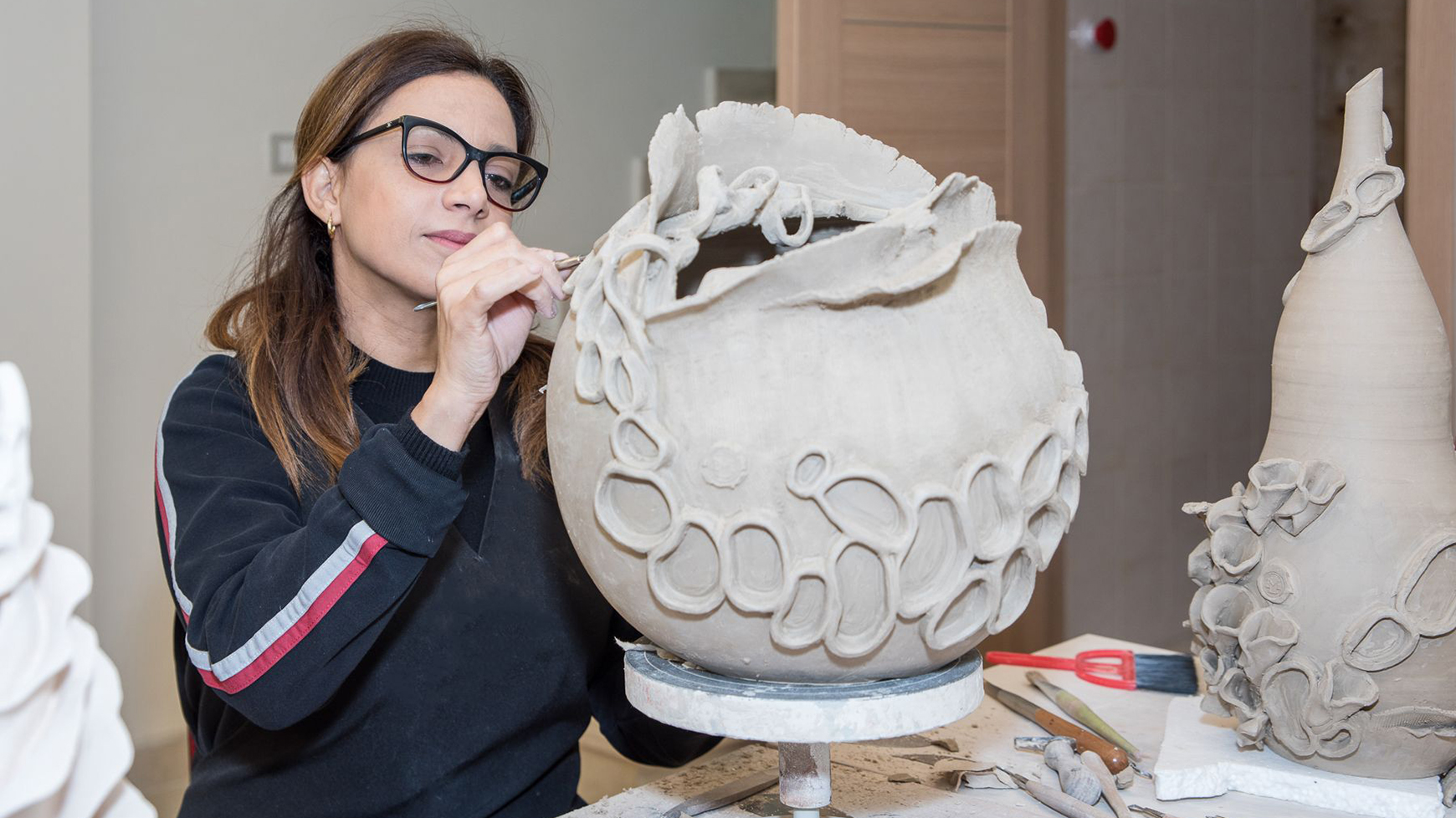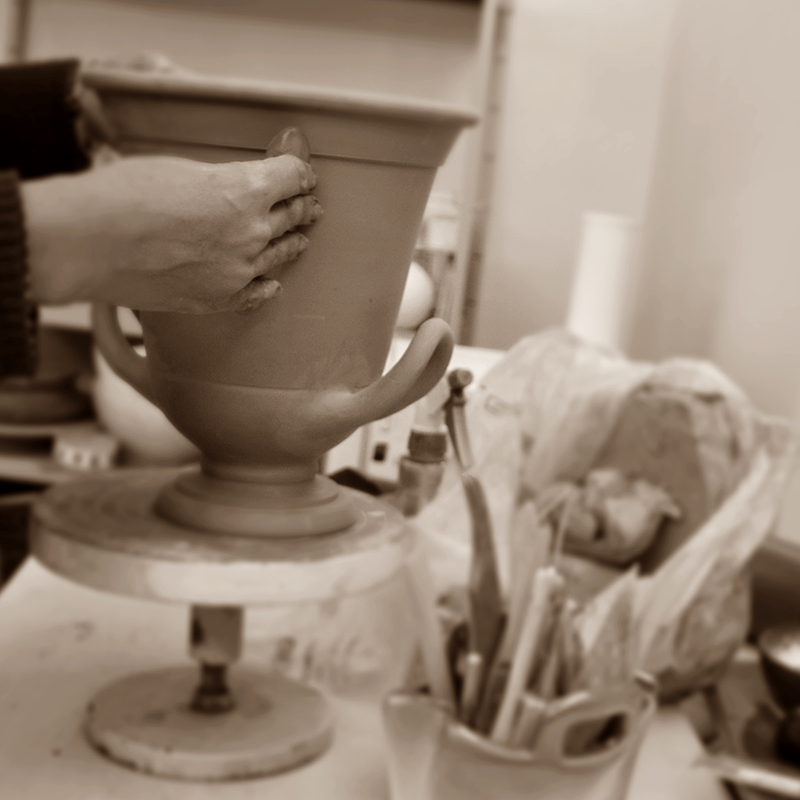
Everything starts with clay
Clay is the raw material with which work begins, very malleable and suitable to be worked with hands. Its "plasticity" is the most important characteristic because it is the only material that can be modelled and is able to maintain its shape.
There are different types of clay and depending on the technique to be adopted, the most suitable one is chosen.
Different clays are used in the Liuva Maqueira’s Laboratory, among them: red clay, white clay, liquid clay, stoneware, refractory and semi-refractory, porcelain.
Before processing, the clay must be mixed and compacted to minimise the presence of air bubbles, to make it homogenous and compact for moulding.
Processing stages: forging, finishing, glazing, decoration, second firing, firing and special processes
Forging
Forging is the first phase of the production process; there are many techniques to shape the object. The main ones are:
- Hand forging: one of the oldest techniques is the colombino technique, which involves making clay "bigoli", i.e., drawn cords that are attached one on top of the other starting from the base. This process makes it possible to obtain rounded, cylindrical, flared, conical, irregular objects, etc,
- Sheet forming: objects of any shape can be made by preparing a clay sheet.
- Lathe forging: used to create cylindrical and/or circular objects. The potter's wheel consists of a rotating support, similar to a plate on which a mass of clay is placed, which must turn perfectly on itself. The shape is given exclusively by the skilful hands of the turner, who only uses wooden, steel and/or rubber sticks.
- Moulding using the casting technique: in this phase, the first step is to prepare the negative plaster mould of the shape to be made. To shape the object, liquid clay (hence the term "pouring") is poured into the mould and after a certain time the plaster absorbs the water contained in the clay, giving the object its thickness. The excess casting is drained off and only when the object has dried and hardened is it removed from the mould.
Finishing
Once the drying process is complete, the object is finished and sponged by hand with water to remove imperfections and increase porosity. In some cases, especially for large objects, the drying process can take a long time.
The first firing stage is also called "biscuit firing". The kiln temperature varies from 960℃ to 1400℃, depending on the clay used to make the object. The firing time varies according to the size of the object, which can only be removed after the kiln has cooled completely. At this stage, the object becomes resistant and the clay changes colour from fragile to terracotta. The colour of the terracotta, depending on the clay used, can be red, white, black, etc.
Glazing
The artist Liuva Maqueira uses different techniques for enamelling and/or glazing: spraying, dipping and/or sprinkling. The enamelling stage requires a great deal of skill, as it is important that the enamel is deposited evenly on the surface of the object.
There are different types and colours of enamel: depending on the technique and decoration, the most suitable enamel is chosen. In addition, the enamels and colours used to make kitchenware (and more) are lead-free and therefore suitable for food use.
Decoration
Once enamelled and dry, the objects can be decorated by hand, with an airbrush, screen printing, digital printing etc.. Decorating with a brush requires a lot of experience, both because the real colour can be seen after firing and because you are painting on a powdery surface (enamel) and it is important to identify the exact density of the colour in order to avoid imperfections.
It is difficult, if not impossible, to describe all the possible variations of decoration that are and can be produced, as on several occasions customers themselves request customised and in some cases exclusive decorations.

